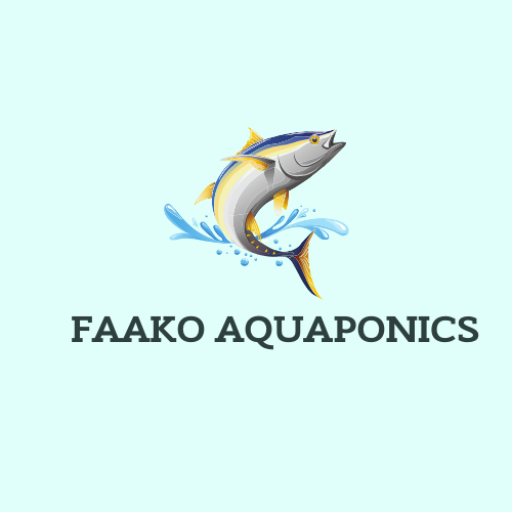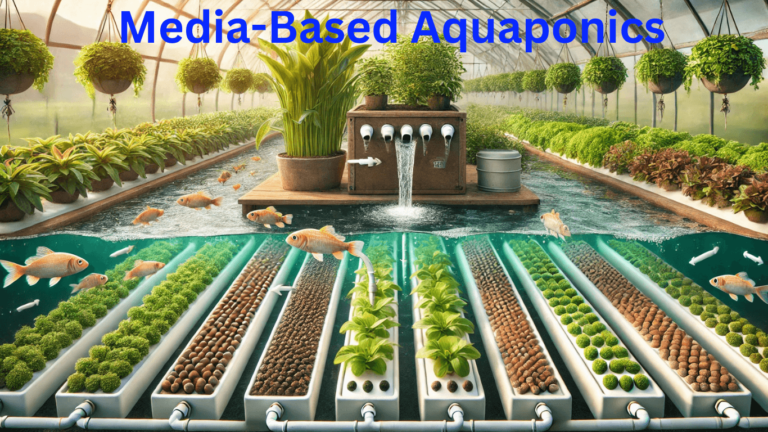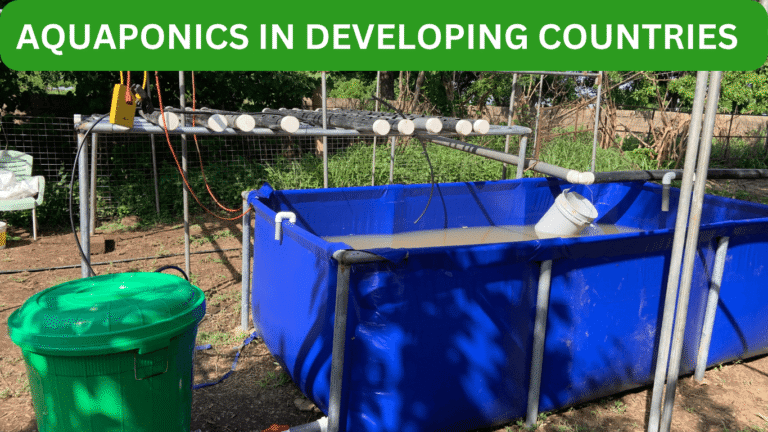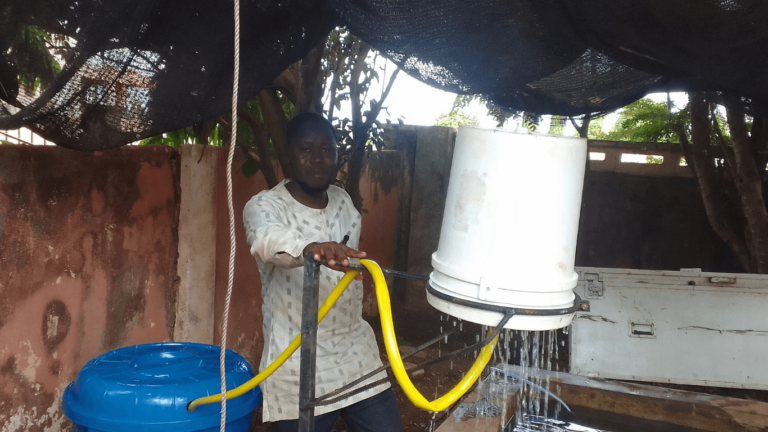Media-based aquaponics systems stand out as a favorite among home growers in the available aquaponics systems. Its straightforward design, space efficiency, and cost-effectiveness make it an ideal choice for beginners and DIY enthusiasts.
A media-based aquaponics system creates a symbiotic relationship between fish and plants, forming a self-sustaining ecosystem where fish waste is converted into essential nutrients for plant growth. This system is an innovative and eco-friendly way to cultivate fresh, organic vegetables and fish in backyards, greenhouses, or even indoor setups.
In this comprehensive guide, we’ll explore everything you need to know about media-based aquaponics systems. Whether you’re a beginner or an experienced aquaponic farmer, you’ll find valuable insights and practical tips to set up and maintain your system successfully.
What Is a Media-Based Aquaponics System?
A media-based aquaponics system involves growing plants in a grow bed filled with a solid medium like gravel, expanded clay pebbles, or lava rock. This grow media not only anchors plant roots but also fosters beneficial bacterial colonies, which help convert fish waste into usable nutrients for plants.
This system is highly versatile, easy to install and maintain, and supports a diverse range of plants, making it a preferred choice for home growers and small-scale farmers.
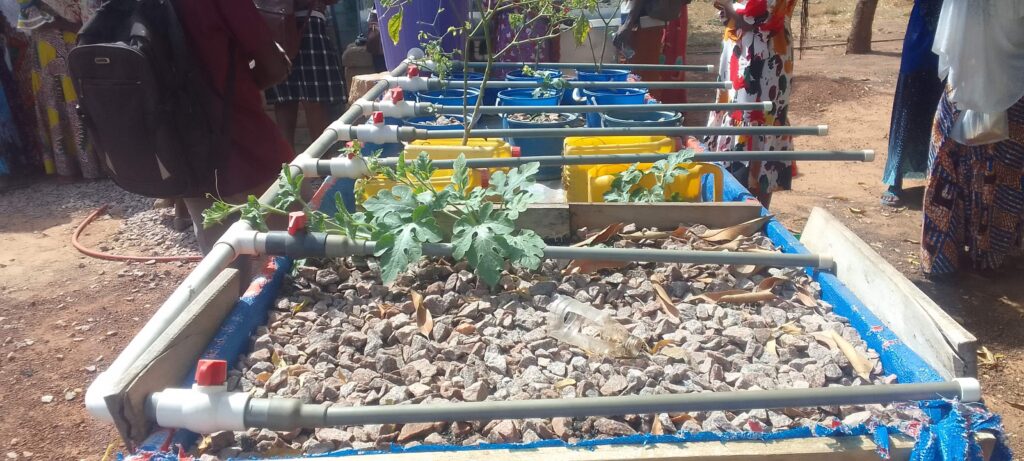
Advantages and Disadvantages of a Media-Based Aquaponics System
Let’s analyze the advantages and disadvantages of the media-based aquaponics system to help you make informed decisions.
Advantages
- Simple and cost-effective – Easy to set up and maintain with minimal technical expertise.
- It Supports a variety of plants – Suitable for both leafy greens and larger fruit-bearing crops.
- The Media-Based has Low maintenance – Requires less frequent cleaning compared to other systems.
- It Is a Customizable design and can be modified to fit different spaces and needs.
- Sustainable use of materials – Recycled materials can be repurposed for grow beds and media.
- Great for home gardening – Ideal for backyard setups, hobby farming, and small-scale commercial applications.
Disadvantages
- High-quality grow media can be expensive.
- Clogging issues – Over time, organic matter can block the pores of the growing media, leading to anaerobic conditions.
- Limited commercial scalability – Less efficient for large-scale production compared to deep water culture (DWC) or nutrient film technique (NFT).
- Heavy weight – Grow beds filled with media require strong structural support.
How Media-Based Aquaponics Compares to Other Systems
Media-based aquaponics differs significantly from other popular aquaponic methods like raft (DWC) and NFT systems.
✔ Raft System (DWC) – Plants float on a raft with roots submerged in nutrient-rich water, making it ideal for fast-growing crops like lettuce but less suitable for larger plants with extensive root systems.
✔ Nutrient Film Technique (NFT) – A thin stream of water flows over plant roots inside narrow channels, making it efficient for small, shallow-rooted plants but prone to disruptions if water flow stops.
Although DWC and NFT systems have their advantages, media-based aquaponics is preferred for home setups due to its ability to accommodate a wider variety of plants, including those with deeper root structures.
Essential Components of a Media-Based Aquaponics System
1. Grow Beds – Containers that hold the grow media and support plant growth.
2. Grow Media – Common options include gravel, clay pellets, or lava rocks, which provide root support and house beneficial bacteria.
3. Fish Tank – The main water source where fish produce nutrient-rich waste.
4. Filtration System – Mechanical and biological filters help remove solid waste and facilitate nutrient cycling.
5. Bell Siphon – Regulates water flow between the grow bed and fish tank, ensuring a balanced cycle.
6. Water Pump – Maintains water circulation, ensuring that nutrients reach both fish and plants.
Key Principles of a Media-Based Aquaponics System
1. The Nitrogen Cycle: A Vital Process
In aquaponics, the nitrogen cycle plays a crucial role in converting fish waste into plant-usable nutrients. Beneficial bacteria transform toxic ammonia (from fish waste) into nitrites and then into nitrates, which plants absorb for growth. This natural process ensures a balanced and self-sustaining ecosystem.
2. Maintaining Proper Nutrient Ratios
For optimal plant growth, maintaining the right balance of macronutrients (such as nitrogen, phosphorus, and potassium) and micronutrients (like iron and zinc) is essential. Regularly monitoring nutrient levels prevents deficiencies and promotes healthy crop development.
3. Regulating pH and Temperature
✔ pH Balance – Most aquaponic plants thrive in a pH range of 6.0-7.0.
✔ Temperature Control – Maintaining stable temperatures supports fish metabolism, plant health, and bacterial activity.
Choosing the Right Grow Media for Your Aquaponics System
1. Gravel – Provides strong root support but can be heavy.
2. Expanded Clay Pellets (Hydroton) – Lightweight, porous, and excellent for aeration.
3. Lava Rock – Highly porous with good bacterial colonization, but sharp edges may require careful handling.
4. Foam – For the most affordable, you can also use simple foam as grow media by cutting it to fix a plastic container.
What are the Best Plants for Media-Based Aquaponics
- Leafy Greens: It supports leafy plants such as Lettuce, spinach, kale, Swiss chard
- Herbs: It supports herbs form of plants like Basil, mint, cilantro, parsley
- Fruiting Vegetables: Vegetables like Tomatoes, peppers, cucumbers, and strawberries are grown through media-based aquaponics
- Root Crops: Radishes, carrots (if the media is deep and loose)
- Flowers and Ornamentals: Marigolds, nasturtiums, and pansies
Selecting plants based on climate, system size, and nutrient availability ensures a productive aquaponic garden.
Best Fish for Media-Based Aquaponics
- Tilapia – Hardy, fast-growing, and adaptable to various conditions.
- Trout – Prefers cooler temperatures and well-oxygenated water.
- Catfish – Resilient and tolerant of fluctuating water conditions.
- Goldfish – Easy to maintain and great for beginners.
- Perch – Ideal for colder climates and sustainable fish production.
When selecting fish, consider factors such as growth rate, temperature tolerance, and local regulations.
Setting Up a Media-Based Aquaponics System
1. Designing the System
Determine the number and size of grow beds.
Choose a stable location for the fish tank and filtration system.
Ensure efficient plumbing and water circulation.
2. Preparing the Grow Media
Rinse and clean grow media before use.
Fill grow beds evenly to support plant roots and prevent compaction.
3. Cycling the System
Establishing a bacterial colony (known as “cycling”) is crucial before adding fish. This can be done by introducing an ammonia source, allowing beneficial bacteria to colonize and convert ammonia into nitrates.
Maintaining Your Media-Based Aquaponics System
Monitor Water Quality: Regularly check pH, ammonia, nitrite, and nitrate levels.
Fish Care: Feed fish a nutritious diet and monitor their health.
Plant Health: Ensure proper spacing and supplement nutrients as needed.
Expand and Scale: If needed, add grow beds or fish tanks to increase production.
Exploring Advanced Aquaponics Techniques
✔ Integrating Nutrient Film Technique (NFT) – Combining NFT with media beds can enhance nutrient delivery.
✔ Vertical Aquaponics – Stacking grow beds or towers maximizes space efficiency.
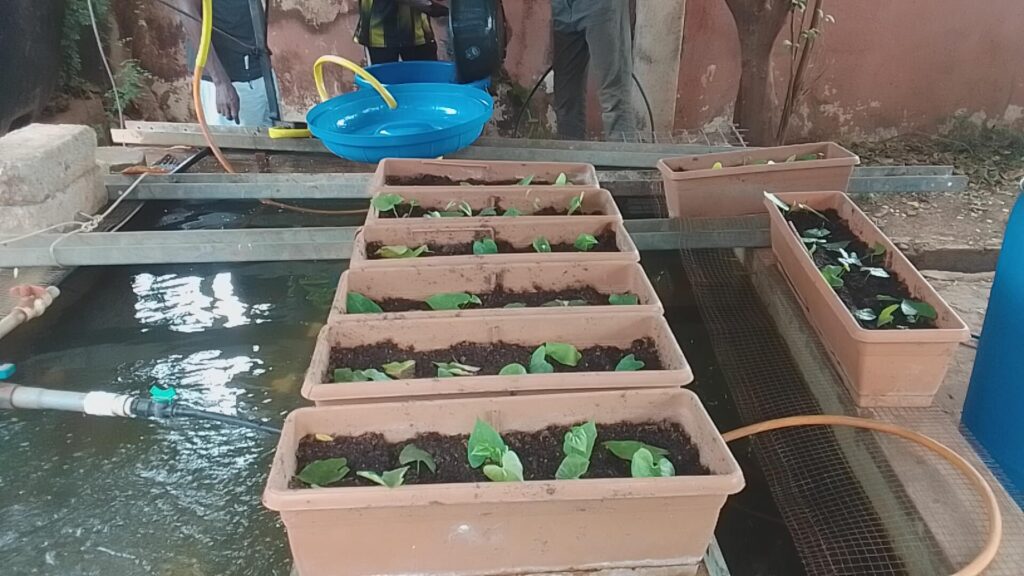
Final Thoughts
A media-based aquaponics system is a sustainable and productive way to cultivate fresh food while reducing environmental impact. By understanding key principles like nutrient cycling, plant-fish balance, and system maintenance, anyone can create a thriving aquaponic garden.
Whether you’re a beginner or an experienced grower, adopting media-based aquaponics opens up new possibilities for sustainable and eco-friendly farming.
